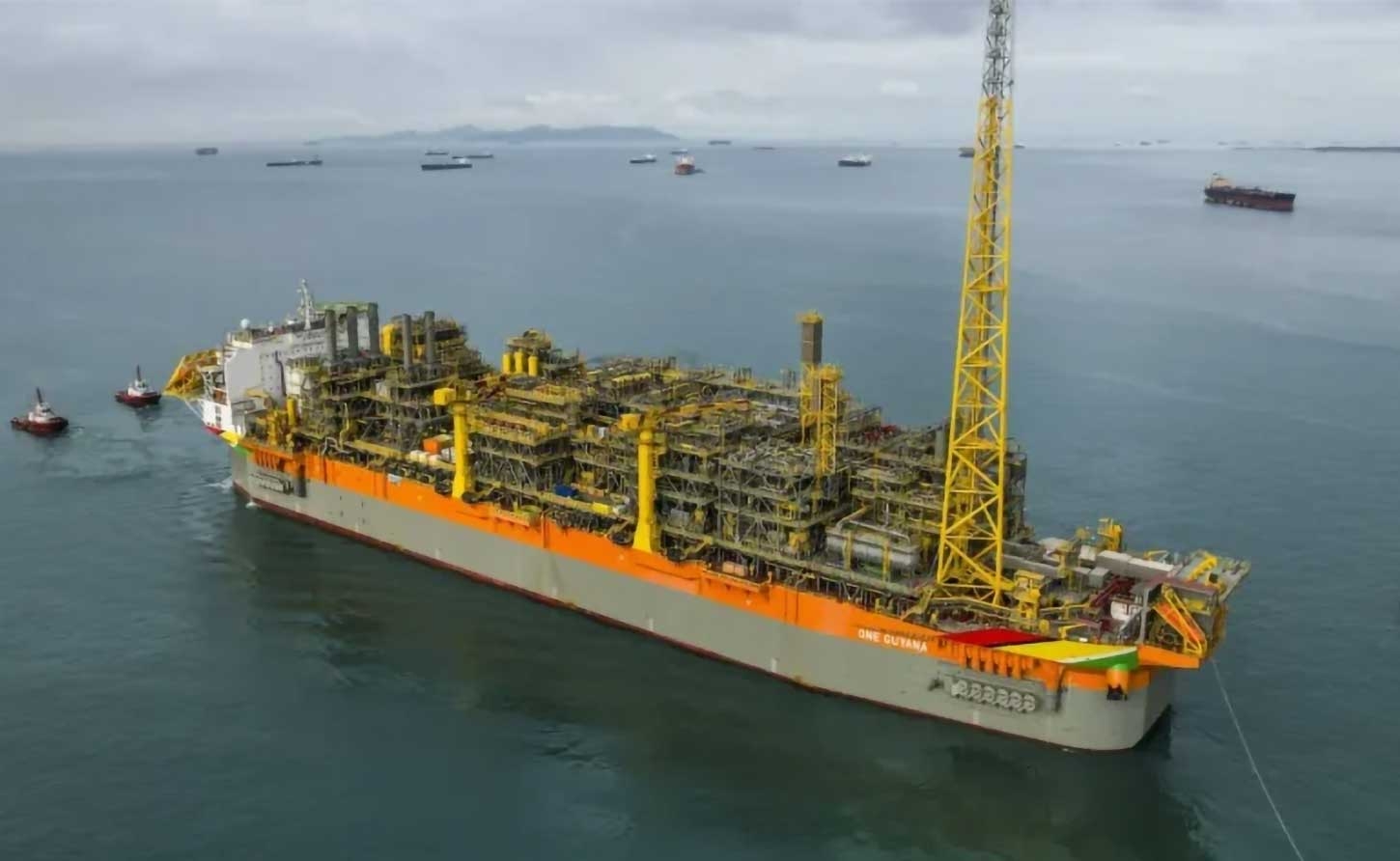GUYANA | Yellowtail's Golden Promise: Guyana's Oil Surge Reaches New Heights Amid Growing Questions

ExxonMobil's fourth offshore project comes online as the Caribbean nation grapples with the complexities of petroleum prosperity
GEORGETOWN, Guyana, August 12, 2025 - The ONE GUYANA floating production storage and offloading vessel now cuts an imposing figure in the South Atlantic, its 2-million-barrel storage capacity representing more than just another milestone in ExxonMobil's Guyanese operations.
With Saturday's startup of the Yellowtail project, this small Caribbean nation has quietly positioned itself at the center of one of the world's most significant oil discoveries, pushing total production capacity beyond 900,000 barrels per day—a figure that would have been unimaginable just a decade ago.
The numbers tell a remarkable story. Yellowtail's 250,000 barrels per day joins production from three sister vessels—Destiny, Unity, and Prosperity—in what ExxonMobil executives proudly describe as the "most successful deepwater developments in the world."
Dan Ammann, president of ExxonMobil Upstream Company, emphasized the project's ahead-of-schedule delivery and the company's growing local footprint, noting that Guyanese workers now comprise over 67% of the country's oil and gas workforce.
Yet behind these celebratory headlines lies a more complex regional narrative. Guyana's transformation from one of South America's poorest nations—with a pre-oil GDP of roughly $4 billion—into a petroleum powerhouse projected to reach 1.7 million barrels per day by 2030 represents both unprecedented opportunity and sobering responsibility.
The nation's oil reserves, estimated at over 11 billion barrels, dwarf those of established Caribbean producers like Trinidad and Tobago, fundamentally reshaping regional energy dynamics.
The Stabroek block, operated by ExxonMobil with partners Hess and CNOOC, has consistently exceeded expectations since the first major discovery in 2015. Four mega-projects delivered under budget and ahead of schedule is an enviable track record in an industry notorious for cost overruns and delays.
The engagement of over 2,000 local businesses suggests a deliberate effort to embed the industry within Guyana's economic fabric—a stark contrast to the enclave development models that have characterized oil production in other developing nations.
However, this rapid expansion raises questions that extend far beyond production statistics. The Caribbean region has witnessed firsthand how petroleum wealth can transform—and sometimes curse—small island and coastal states.
Trinidad and Tobago's experience with Dutch Disease, where oil revenues undermined agricultural and manufacturing competitiveness, offers a cautionary tale just 500 miles northwest of Georgetown.
Guyana's challenge is compounded by scale and speed. While Trinidad's oil industry developed over decades, allowing for gradual institutional adaptation, Guyana has leaped from zero to nearly a million barrels per day in less than a decade.
The country's political institutions, legal frameworks, and regulatory capacity are being stress-tested in real-time as petroleum revenues flow into a sovereign wealth fund that represents the nation's economic future.
The regional implications extend beyond Guyana's borders. As Venezuelan oil production languishes under sanctions and economic mismanagement, and as Trinidad grapples with declining reserves, Guyana's emergence reshuffles Caribbean energy geopolitics.
The country's growing influence within CARICOM and its strengthened ties with both the United States and China reflect petroleum diplomacy in action.
Environmental considerations add another layer of complexity. Each new FPSO represents significant carbon emissions in an era of climate urgency, particularly challenging for Caribbean nations facing existential threats from sea-level rise.
The contrast between Guyana's oil boom and regional climate vulnerabilities creates uncomfortable contradictions that neighboring island states are watching closely.
The ONE GUYANA's christening with locally-produced "Golden Arrowhead" crude carries symbolic weight, representing national branding in global energy markets. Yet questions persist about benefit distribution within Guyana's ethnically diverse society of 800,000 people.
Early signs suggest broad-based infrastructure investment and social programs, but the real test will come as oil revenues mature and political cycles change.
ExxonMobil's track record in Guyana contrasts favorably with the company's more controversial operations elsewhere in the developing world. The emphasis on local workforce development and business engagement, if sustained, could provide a template for responsible resource extraction.
However, the ultimate success will be measured not just in barrels produced but in whether Guyana avoids the resource curse that has befallen other oil-rich developing nations.
As four additional Stabroek projects advance toward 2030 completion, the Caribbean is witnessing the emergence of a new regional power. Yellowtail's startup marks not just another production milestone but a inflection point in regional development patterns.
Whether Guyana's petroleum promise translates into sustainable prosperity—or joins the graveyard of squandered resource booms—will be determined not in Houston boardrooms but in Georgetown's halls of power.
The ONE GUYANA now joins its sister vessels in extracting wealth from beneath the waves. The greater challenge lies in ensuring that wealth translates into lasting benefits for the Guyanese people and serves as a model for responsible development throughout the Caribbean region.
-30-

 En
En  Ar
Ar